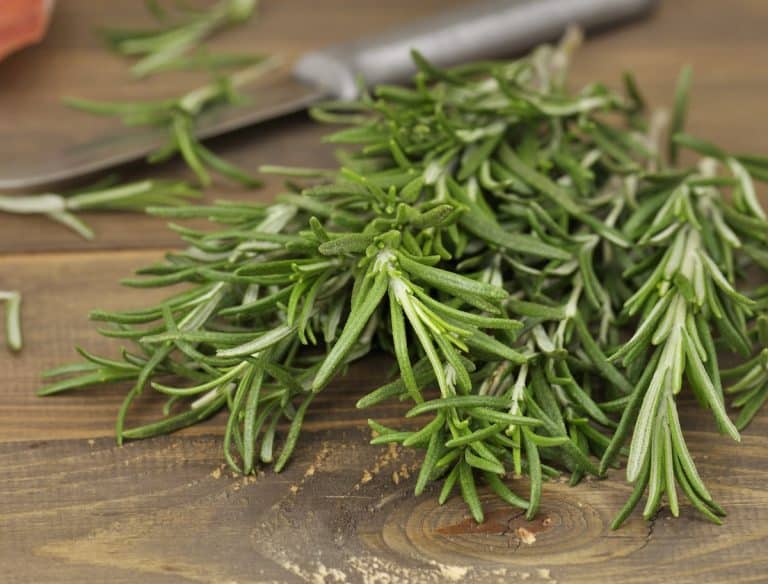Understanding The Differences Between Rosemary & Thyme: A Gardener's Guide

Table of Contents
Botanical Differences Between Rosemary and Thyme
Rosemary and thyme, while both members of the mint family (Lamiaceae), possess distinct botanical features. Understanding these differences is the first step in successful cultivation.
Plant Classification
- Rosemary (Salvia rosmarinus): Belongs to the Salvia genus within the Lamiaceae family. This genus is known for its diverse array of aromatic plants.
- Thyme (Thymus vulgaris): A member of the Thymus genus, also within the Lamiaceae family. This genus encompasses numerous species and cultivars of thyme, each with its own unique characteristics.
Growth Habit
- Rosemary: Typically grows as a woody, evergreen shrub. Depending on the variety and growing conditions, it can grow upright, reaching heights of several feet, or exhibit a more sprawling, trailing habit. Some rosemary varieties are even suitable for growing in containers.
- Thyme: A low-growing, spreading perennial. It often forms a dense mat, making it ideal for ground cover or rock gardens. Many thyme varieties, such as creeping thyme, are specifically selected for their spreading growth habit.
Foliage
- Rosemary: Features needle-like, evergreen leaves with a distinct, strong aroma. The leaves are typically grey-green to dark green, and their texture is quite rigid.
- Thyme: Possesses small, oval-shaped leaves that are densely packed along the stems. The leaves are typically bright green, although variegated varieties with different color combinations exist. The texture is softer than rosemary leaves.
Cultivation and Care
Successfully growing rosemary and thyme involves understanding their specific needs regarding sunlight, soil, and watering.
Sunlight Requirements
- Rosemary: A sun-worshipper! Rosemary thrives in full sun, requiring at least 6-8 hours of direct sunlight daily for optimal growth. Insufficient sunlight can lead to leggy growth and reduced aroma.
- Thyme: Also prefers full sun, but it’s more tolerant of partial shade than rosemary. While it will grow best in full sun, it can tolerate a few hours of shade, particularly in hotter climates.
Soil and Drainage
- Rosemary: Excellent drainage is paramount for rosemary. It’s highly susceptible to root rot in poorly drained, waterlogged soil. Sandy or gravelly soil is ideal.
- Thyme: While it also prefers well-drained soil, thyme is slightly more tolerant of heavier soils than rosemary. However, ensuring good drainage will always promote healthier growth.
Water Needs
- Rosemary: Once established, rosemary is relatively drought-tolerant. Overwatering is a much greater threat than underwatering; allow the soil to dry out somewhat between waterings.
- Thyme: Requires regular watering, especially during dry periods. However, avoid letting the soil become waterlogged, as this can lead to root rot.
Propagation
- Rosemary: Easily propagated from stem cuttings or seeds. Cuttings are generally the most successful method.
- Thyme: Can be propagated from cuttings, seeds, or by division. Division is particularly easy with established thyme plants.
Culinary Uses and Flavors
Both rosemary and thyme are culinary treasures, but their distinct flavor profiles make them suitable for different dishes.
Rosemary Flavor Profile
- Rosemary boasts a strong, pungent, slightly resinous flavor with hints of pine and citrus. This robust flavor makes it a perfect complement to hearty dishes.
- It pairs exceptionally well with lamb, roasted vegetables (especially potatoes and root vegetables), and grilled meats. It also adds a distinctive flavor to bread and other baked goods.
Thyme Flavor Profile
- Thyme offers a milder, sweeter flavor than rosemary, with earthy and slightly lemony notes. Its subtle yet complex flavor makes it a versatile herb.
- It's widely used in soups, stews, poultry dishes, and sauces. It's also a wonderful addition to tomato-based dishes and egg dishes.
Conclusion
While both rosemary and thyme are invaluable additions to any herb garden, understanding their distinct characteristics is crucial for successful cultivation and culinary application. Remember, rosemary's strong, pungent flavor pairs well with robust dishes and thrives in full sun and well-drained soil, while thyme's milder, sweeter taste complements a wider range of culinary creations and tolerates slightly more shade. By understanding these Rosemary vs Thyme differences, you can confidently select and care for these aromatic plants, ensuring a bountiful harvest of delicious herbs. Start planning your herb garden today and learn more about the wonderful world of Rosemary and Thyme cultivation!

Featured Posts
-
 Sanofis Chlamydia Vaccine Fda Fast Track Designation
May 31, 2025
Sanofis Chlamydia Vaccine Fda Fast Track Designation
May 31, 2025 -
 Is Miley Cyrus Hit Een Plagiaat Van Bruno Mars Rechtszaak Wordt Voortgezet
May 31, 2025
Is Miley Cyrus Hit Een Plagiaat Van Bruno Mars Rechtszaak Wordt Voortgezet
May 31, 2025 -
 River Thames Rescue Police Search For Missing Girl 11
May 31, 2025
River Thames Rescue Police Search For Missing Girl 11
May 31, 2025 -
 Top Seed Zverevs Unexpected Loss To Griekspoor In Indian Wells
May 31, 2025
Top Seed Zverevs Unexpected Loss To Griekspoor In Indian Wells
May 31, 2025 -
 Glastonbury 2025 Coach Travel Full List Of Locations And Resale Ticket Prices
May 31, 2025
Glastonbury 2025 Coach Travel Full List Of Locations And Resale Ticket Prices
May 31, 2025
